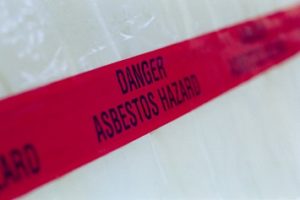Commonly thought of as an issue of the previous century, asbestos is still very much a hazard that many employees face in the workforce today. From existing asbestos that has been in buildings for decades to the few remaining current uses, asbestos awareness should be of concern and handled properly.
Asbestos exposure is known to cause several illnesses, including a chronic lung condition known as asbestosis, asbestos lung cancer, and, in some cases, a cancer called mesothelioma. Both a rare and aggressive form of cancer, mesothelioma is also a leading occupational cancer in North America, as well as around the world. Global Asbestos Awareness Week is April 1–7 each year and presents an opportunity to both revisit this ongoing issue and find better ways to keep workers safe.
Durable, heat-resistant, and inexpensive, asbestos was used in its raw form, as well as within prefabricated materials, for the better part of the 20th century. While it was present in clothing, appliances, and home goods, it was most commonly and prolifically used in machinery, construction, and industrial applications. These wide-ranging and expansive uses are how it became, and has endured as, a leading occupational carcinogen. Once it was recognized as being hazardous to human health more than 50 years ago, asbestos use has sharply declined since 1980. However, it is still legal up to 1% in new and imported items and used to this day in the United States, remaining a dangerous misconception that it has been banned.
Risk of exposure occurs when asbestos-containing materials become broken, disturbed, or worn down. Outside of instances where raw asbestos was utilized, it is predominately found encased and included within prefabricated materials, such as pipe insulation. When these items experience wear and tear through daily activities or simply age, or become broken during renovation or maintenance, the microscopic fibers are released into the air and pose a serious health hazard. The loose fibers can be easily inhaled or ingested and then become trapped in the body, most commonly in the lungs. Over a span of anywhere from 20–50 years, this can lead to irritation, scarring, and tumors that can develop into asbestos-related diseases like mesothelioma.
Many occupations are still at risk of exposure through both working with heavy machinery that utilizes asbestos-containing materials or in office settings where existing asbestos can still be within the structure of the work space. However, most occupational exposure occurs to those working in close proximity to asbestos like contractors, plumbers, power plant employees, and electricians. In addition to being exposed on the job, these workers can often unknowingly carry the invisible fibers home with them on their clothing, hair, and skin to further increase their risks of ingesting it themselves, as well as exposing their houses and loved ones.
Places, items, and areas that asbestos is still commonly found around the workplace include:
- Pipe, duct, and window wrappings;
- Gaskets, ceiling and floor tiles, and tiling mastic;
- Popcorn ceilings, wall texture, and plaster;
- Around boilers, generators, furnaces, and electrical wiring; and/or
- Wall insulation, corrugated paper, and cardboard.
For those working in heavy machinery, office spaces, and construction, following all OSHA regulations and adhering to rules and safety measures while handling asbestos-containing materials are the easiest first steps to ensuring workplace safety. Maintenance and regular upkeep of known asbestos-containing materials are other necessary steps, as keeping asbestos risks contained and carefully monitored is another proactive measure that can go a long way in helping mitigate exposure hazards. Having policies, procedures, and hazardous waste plans in effect is often necessary and helpful for all workers, supervisors, and management prepared to fully and properly navigate any workplace issues that might arise.
While taking proper precautions around known asbestos-containing materials is vital to safety, those in roles like contractors and residential services can be left in the dark about where asbestos could be found. Being knowledgeable about places asbestos was commonly used and where it is still found is crucial information to have when properly testing for possible asbestos before beginning any project.
Testing and abatement by licensed professionals can keep workers and the spaces in which they will be working safe and free of any asbestos hazards while they complete their projects. All abatement and handling, whether it be in industrial settings or residential, should be carried out by certified professionals who abide by all necessary regulations and precautions, from prepping the space to safely disposing of asbestos-containing waste in designated landfills or collection centers.
Dealing with existing asbestos can be a complicated and necessary process. For those working around newer applications of asbestos use, information and awareness are of the utmost importance. Typically found in imported, prefabricated items, asbestos is currently still used in:
- The automotive industry in brake pads and linings,
- Chlor-alkali production machinery parts,
- Paper goods, like corrugated cardboard, and
- Construction items, like prefabricated cement blocks.
Health, safety, and worker well-being should be the most important consideration in any place of work. Taking steps to recognize and manage any known risks, like asbestos, as well as raising awareness in the workplace, is essential to actively ensuring employee health.
For more about Global Asbestos Awareness Week, visit the Asbestos Disease Awareness Organization’s website here.

